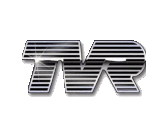Motor in an electric car: Buy and change a used electric motor
Electric cars are becoming more and more widespread in Europe. However, with increasing vehicle age, the susceptibility to repairs increases. Often the question arises: How can an electric motor be replaced? In our guide, we explain how to replace the defective motor of an electric car with an intact one and where you can buy used spare parts for e-cars. We also give tips on how to handle the e-car safely during the repair.
Motor damage in the e-car
While most owners of e-cars tend to worry about a battery replacement in the near future, engine damage is by no means unlikely. After all, it is not only the battery modules that lose capacity over time; the vehicle’s motor is also subject to a certain amount of wear and tear. If the motor is defective, it is sometimes worth replacing the entire drive unit.
Precautions when working on e-cars
In order to be able to provide a high driving performance, modern electric vehicles are equipped with a high-voltage system. This allows the motor of the electric car to be supplied with a correspondingly high voltage. However, the voltages provided by the high-voltage battery are dangerous for the human organism and can also lead to death.
In order to work safely on electric cars with high-voltage systems, various safety precautions must be taken. In Germany, workshop employees must also be specially qualified to work on high-voltage vehicles. Components of high-voltage systems in cars are often marked in orange, such as orange cables and plugs.
It is of utmost importance to disconnect the electric car from the power supply before starting work. The current flow between the batteries and the rest of the vehicle’s electrical system must be interrupted. Depending on the manufacturer, electric vehicles have a special switching device, the service disconnect plug. Once the plug is pulled out, the car is voltage-free.
Replacing the electric motor – How to change the motor in an electric car
The procedure for replacing an electric motor in a passenger car may differ from that for an internal combustion engine. Depending on how the motor is designed in the electric car, even fewer add-on parts, cables and system components have to be dismantled. However, there is a risk of fatal electric shocks if the high-voltage battery is not disconnected.
Depending on the manufacturer and design of the electric car, the exact procedure for replacing motors also differs. Some drive concepts are designed with electric motors as wheel hub motors, while in other models the electric motor is classically housed in the engine compartment. The easiest way to replace the motor is if the vehicle has a compact drive unit.
In the drive unit, as used by Tesla or other brands, the motor, controller, gearbox and differential are combined in one housing. This drive unit can be changed comparatively easily from below. Various tools are needed for the repair, as well as personal protective equipment when disconnecting the power supply, depending on the manufacturer. A torque spanner, a gearbox jack and a disassembly tool for drive shafts are helpful.
Remove defective motor
- Disconnect the vehicle from the power supply: Depending on the manufacturer, the low-voltage battery is disconnected and the connection to the high-voltage batteries is interrupted via the service disconnect plug.
- Lift the car with a lifting platform: To be able to remove the drive unit from under the car, the vehicle should be lifted onto a lifting platform. This way the work can be carried out comfortably.
- Removing the connecting cables: The connecting cables on the engine are removed by loosening the plug contacts. Depending on the type of vehicle, this may be the connection to the control unit and the accelerator pedal, as well as the connection to the battery.
- Drain the coolant: Many electric cars have a cooling circuit for the electric motor. To drain the coolant, the connections on the motor are loosened and the coolant is collected in a container.
- Pull off the drive shafts: To be able to remove the engine, the drive shafts are pulled off the vehicle’s engine unit. Depending on the vehicle, this is best done with a special tool.
- Use gear jack: To be able to remove the drive unit, a hydraulic gear jack is positioned and secured under the engine. In this way, the defective engine can be safely removed and conveniently lowered later.
- Loosen the fastenings: In the last step of the disassembly, the fastening screws of the defective electric motor are loosened to remove the motor. The drive unit then rests on the gear jack and can be removed in a few easy steps.
This is how the new engine is installed
- Position the engine: The newly acquired and intact drive unit is lifted with the transmission jack and positioned appropriately underneath the car. This makes it easy to install in the vehicle.
- Attach the electric motor: Once the motor is positioned appropriately and all mounting points match, the fixing screws can be inserted. The fasteners are then tightened to the correct torque.
- Insert drive shafts: Next, the previously removed drive shafts are inserted into the newly mounted drive unit. Sometimes it is a good idea to replace the oil seals of the drive shafts with new ones.
- Fill up with coolant: The next step is to connect the cooling circuit to the drive unit. Any missing coolant must be replenished and the engine and cooling circuit must be vented.
- Connect the electrical connections: To be able to operate the engine, the drive unit must be reconnected to the battery and the other components of the vehicle. To do this, connect all the previously disconnected connectors to the newly installed unit.
- Establish the power supply: Once all work has been completed and all systems have been checked for safety, the power supply can be restored. To do this, the service disconnect plug is put back in its intended place.
- Test the e-car: Once the repair has been completed and the electric vehicle has been lowered from the lifting platform, all systems should be checked again using a measuring device. Afterwards, final tests can be carried out and a test drive can be undertaken.
Buy an electric motor car – Here you can buy a used electric motor car
Due to favourable prices, it is sometimes advantageous to completely exchange the defective motor of an e-car for a used spare part. Suitable parts for electrically powered cars are removed in the course of car recycling, tested and then offered for sale. Thanks to information such as the original number and photos, the parts can be easily compared with the existing motor.
Autoparts24 offers a wide range of spare parts for electric vehicles as well. You can easily find suitable parts for your electric vehicle using the practical search function. After entering the vehicle data, all available parts are listed in the overview. In addition to information about the price, data such as the mileage or the exact engine designation can also be found here.



















_logo.png)























_logo.png)









































_logo.png)

































